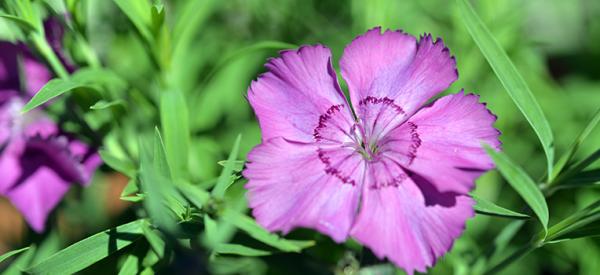fragrance
-
In the night garden
Night scent Scented plants add an extra dimension to the night garden. Perfume is one of the lures plants use to attract pollinators to their flowers. Those plants that rely on night-flying insects for pollination (such as moths and beetles) may be extra fragrant at night or may only open at night, furling their flowers by day. To enjoy plants... -
Dianthus
A little bit about dianthus If you’re a frill seeker, you’ll love dianthus. Set against silvery-green foliage, dianthus are a wonderful addition to any sunny spot with their frilly, tufted white, pink, red and mauve flowers. Many dianthus boast two-coloured petals that are laced, flecked or picotee (an outer margin of another colour, usually red). One of its common names, ‘pinks’... -
How to create a scent-sational garden
Indulge in living fragrance fashioned by the most famous perfumer of all - Mother Nature. One of the things we love most about spring in the garden is the sensory wonderland it creates. Spring brings a cavalcade of colour, lush foliage texture, an influx of wildlife and a bumper edible harvest - but most of all, it brings scent. And... -
Lavender
A little bit about lavender A member of the mint (Lamiaceae) family, lavender is a hardy plant best known for its beautiful fragrance. It’s a low-growing but mostly upright shrub featuring silvery leaves rich with aromatic oils. It's a great, low-maintenance garden choice as it’ll flush into fragrant, colourful bloom with very little attention. Plant this beauty in your garden...
Page
- You're currently reading page 1




